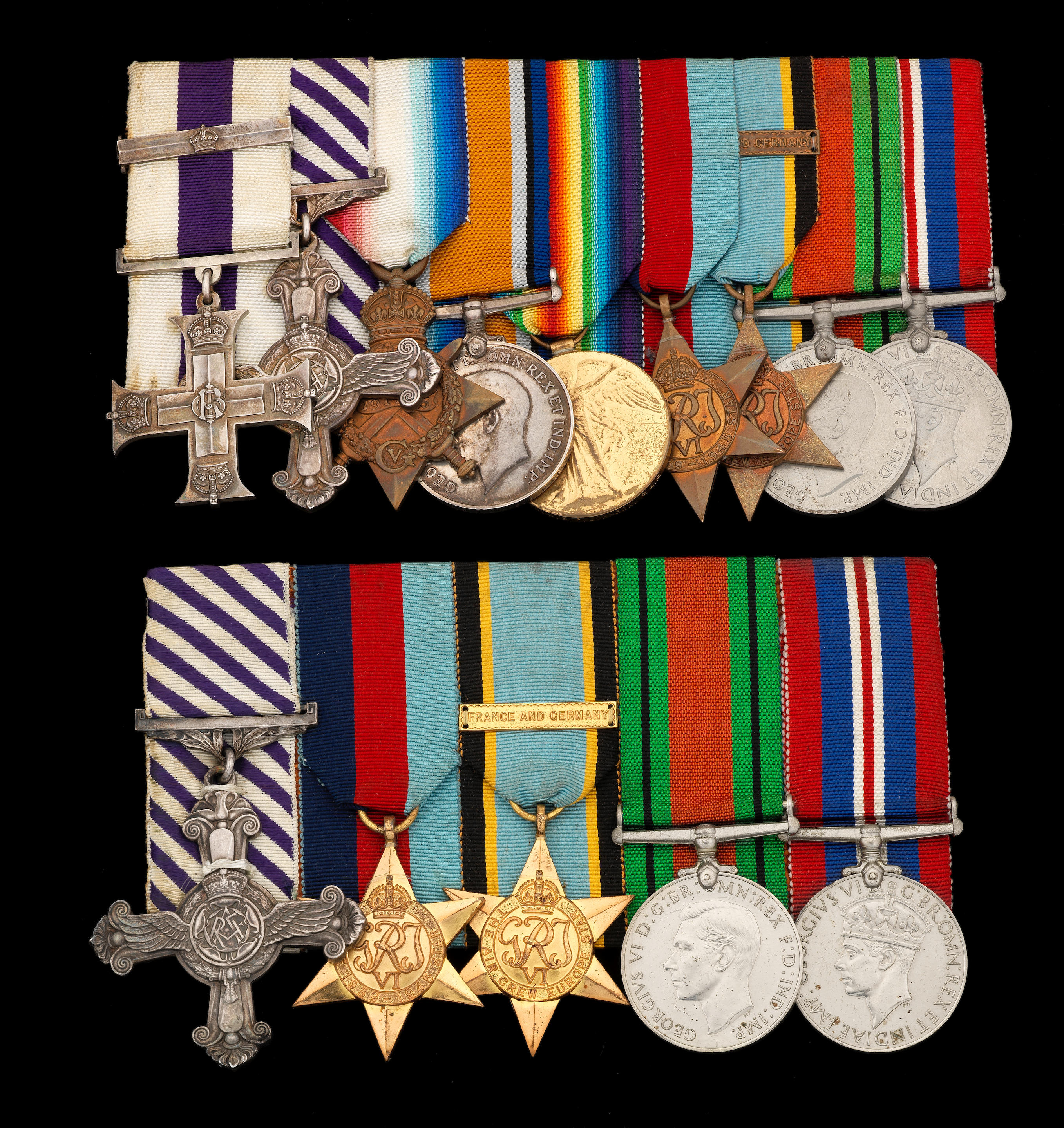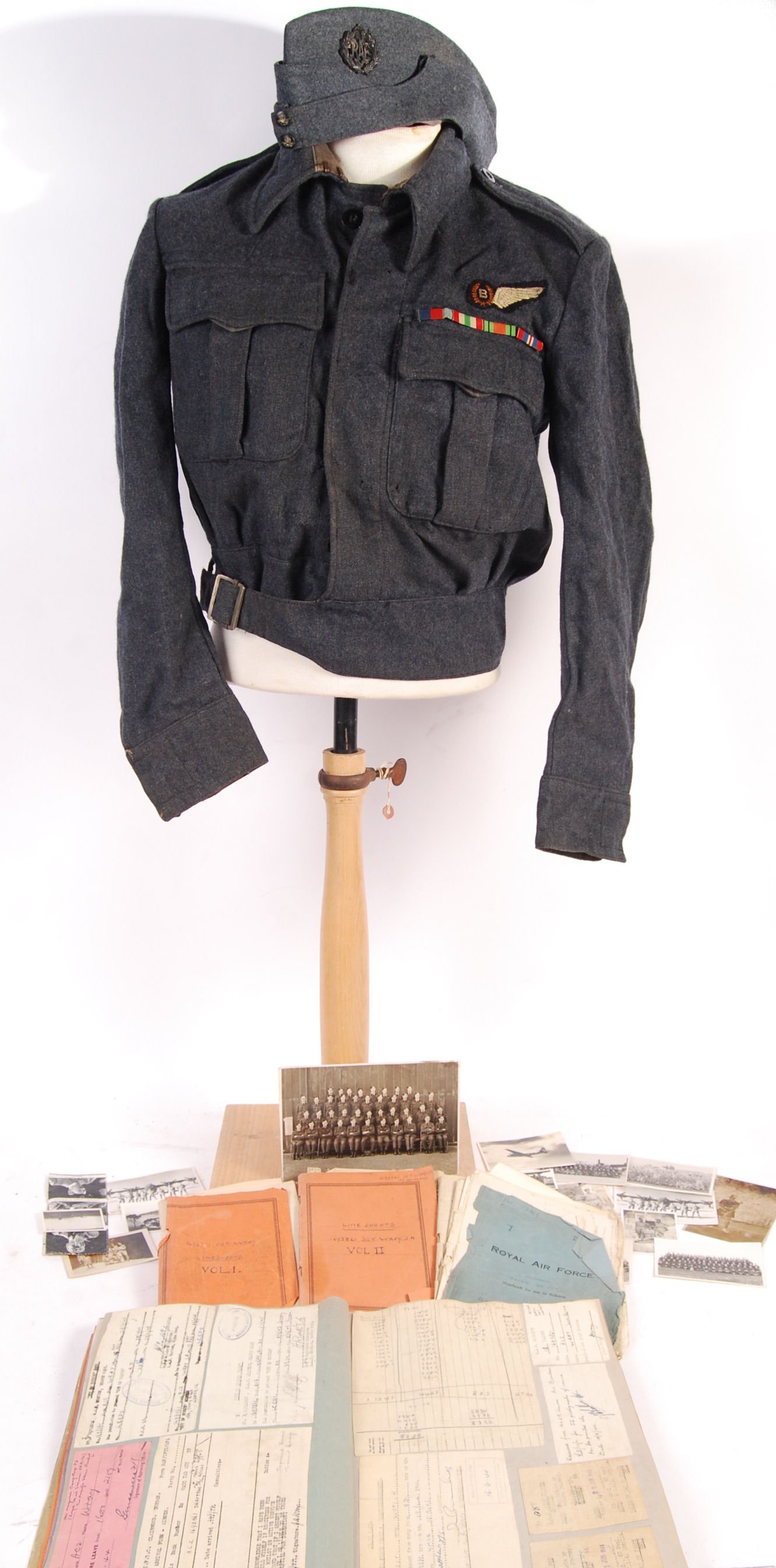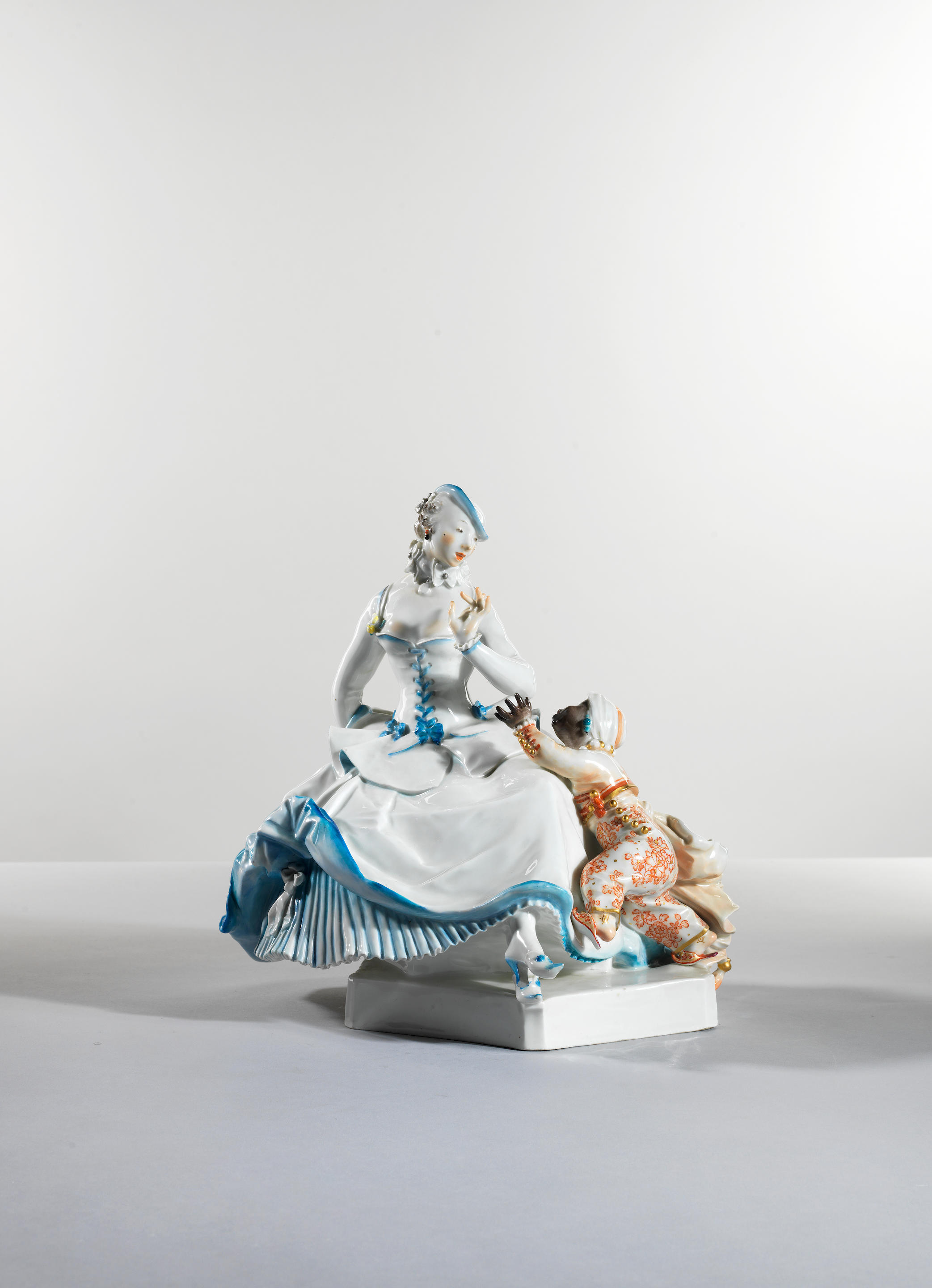The unique group of seven awarded to Colour Sergeant George Godfrey, 9th Foot, late 13th Light Infantry, one of the earliest recipients of the M.S.M. and a long time Yeoman Warder at the Tower of London Ghuznee 1839 (G. Godfrey, 13 P.A.L.I.); Cabul 1842 (* No. 702 Sergt. GeorgeGodfrey, 13th or P.A.L.I.*) fitted with steel clip and bar suspension, this fractured near the clip; Defence of Jellalabad 1842, Flying Victory (Clr. Sgt. G. Godfrey, No. 702 * 13th or P.A.L.I.) naming faintly engraved and obscured in parts by contact wear, fitted with steel clip and bar suspension and with the special red and blue ribbon issued by the Colonel of the 13th to be worn with this medal; Sutlej 1845-46, for Moodkee 1845, 2 clasps, Ferozeshuhur, Sobraon (Color Serjt. Geo: Godfrey 9th Regt.) one side of bottom clasp detached from suspension rod; Meritorious Service Medal, V.R., 1st issue, dated 1847 on the edge (Color Serjt. George Godfrey 9th Regt. 1-4-) two figures of the date illegible due to contact wear; 13th Foot Order of Merit, silver, for 14 years good conduct (Balmer R214c), unnamed as issued; 9th Foot Regimental Medal, silver (Balmer R201b - one of only three known examples), inscribed on the reverse (Color Sergeant George Godfrey Presented by the Sergeants H.Ms 9th Regt. as a token of esteem) contact marks and edge bruising overal but generally good fine or better, an extremely important and unique group of medals (7) £4000-5000 Footnote Ex Lord Cheylesmore collection 1930 and Elson collection 1963. In the first year of issue, 1847, only 107 M.S.Ms were awarded and dated on the edge. George Godfrey was born at Watford, Hertfordshire, on 4 June 1805. He started work at 3/6d per week in a turner’s shop in Watford, then sold brushes door-to-door around Cambridgeshire. Later he worked in a doctor’s shop for 18 months for 7/- per week. He later lived near Rickmansworth and worked as a liveried footman and then moved to London where he worked in a grocer’s shop in Fleet Street. On 22 February 1826, at Ludgate Hill, near St Paul’s Cathedral, he attempted to join the 7th Hussars but was too short. He was taken to the Coach and Horses at York Street, Westminster, and enlisted into the 13th Light Infantry. His Captain was a Waterloo veteran. After recruit training, because he could read and write, he was placed in the Orderly Room, copying orders, and was later transferred to the recruiting service, earning 15/- for each man recruited. He was at first active in Soho, then Hounslow, but then had to march via Wells and Glastonbury to Taunton, where he remained for a year, then moving to Wells for a further year. His next move was a march to Gravesend to board the Moffat bound for the East Indies. It took three months and 20 days to arrive at Calcutta, where he met Brevet Captain Havelock and joined the Temperance Movement. In January 1832 he was at Agra, and in April 1835 he married the widow of Lance Sergeant Henry Nicholls. In 1838 the 13th Light Infantry formed part of the 1st Brigade of the Army of the Indus, leaving Kurnaul for Ferozepore and crossing the Indus, through Scinde and Baluchistan to the Bolan Pass, then on to Candahar. During his lifetime his autobiography The Life of George Godfrey was published in 1882, fully detailing his life from childhood to his 77th birthday, and it was sold at the Middle Tower for one shilling. It was later published during the 1890s in the Brigade of Guards’ Magazine as part of a series entitled Brave Soldiers, from which the above information has been culled. The following extracts are also taken from that work: ‘From thence we proceeded to Ghuznee. The fortress, a very strong one, was taken after an assault on the 23rd of July, 1839, by the army of the Indus, under the command of Sir John Keane From thence the march was continued to Cabool without opposition, that being the capital of Afghanistan, 3rd of August, 1839. The country abounds with hills and valleys; the former are generally barren, the l
The unique group of seven awarded to Colour Sergeant George Godfrey, 9th Foot, late 13th Light Infantry, one of the earliest recipients of the M.S.M. and a long time Yeoman Warder at the Tower of London Ghuznee 1839 (G. Godfrey, 13 P.A.L.I.); Cabul 1842 (* No. 702 Sergt. GeorgeGodfrey, 13th or P.A.L.I.*) fitted with steel clip and bar suspension, this fractured near the clip; Defence of Jellalabad 1842, Flying Victory (Clr. Sgt. G. Godfrey, No. 702 * 13th or P.A.L.I.) naming faintly engraved and obscured in parts by contact wear, fitted with steel clip and bar suspension and with the special red and blue ribbon issued by the Colonel of the 13th to be worn with this medal; Sutlej 1845-46, for Moodkee 1845, 2 clasps, Ferozeshuhur, Sobraon (Color Serjt. Geo: Godfrey 9th Regt.) one side of bottom clasp detached from suspension rod; Meritorious Service Medal, V.R., 1st issue, dated 1847 on the edge (Color Serjt. George Godfrey 9th Regt. 1-4-) two figures of the date illegible due to contact wear; 13th Foot Order of Merit, silver, for 14 years good conduct (Balmer R214c), unnamed as issued; 9th Foot Regimental Medal, silver (Balmer R201b - one of only three known examples), inscribed on the reverse (Color Sergeant George Godfrey Presented by the Sergeants H.Ms 9th Regt. as a token of esteem) contact marks and edge bruising overal but generally good fine or better, an extremely important and unique group of medals (7) £4000-5000 Footnote Ex Lord Cheylesmore collection 1930 and Elson collection 1963. In the first year of issue, 1847, only 107 M.S.Ms were awarded and dated on the edge. George Godfrey was born at Watford, Hertfordshire, on 4 June 1805. He started work at 3/6d per week in a turner’s shop in Watford, then sold brushes door-to-door around Cambridgeshire. Later he worked in a doctor’s shop for 18 months for 7/- per week. He later lived near Rickmansworth and worked as a liveried footman and then moved to London where he worked in a grocer’s shop in Fleet Street. On 22 February 1826, at Ludgate Hill, near St Paul’s Cathedral, he attempted to join the 7th Hussars but was too short. He was taken to the Coach and Horses at York Street, Westminster, and enlisted into the 13th Light Infantry. His Captain was a Waterloo veteran. After recruit training, because he could read and write, he was placed in the Orderly Room, copying orders, and was later transferred to the recruiting service, earning 15/- for each man recruited. He was at first active in Soho, then Hounslow, but then had to march via Wells and Glastonbury to Taunton, where he remained for a year, then moving to Wells for a further year. His next move was a march to Gravesend to board the Moffat bound for the East Indies. It took three months and 20 days to arrive at Calcutta, where he met Brevet Captain Havelock and joined the Temperance Movement. In January 1832 he was at Agra, and in April 1835 he married the widow of Lance Sergeant Henry Nicholls. In 1838 the 13th Light Infantry formed part of the 1st Brigade of the Army of the Indus, leaving Kurnaul for Ferozepore and crossing the Indus, through Scinde and Baluchistan to the Bolan Pass, then on to Candahar. During his lifetime his autobiography The Life of George Godfrey was published in 1882, fully detailing his life from childhood to his 77th birthday, and it was sold at the Middle Tower for one shilling. It was later published during the 1890s in the Brigade of Guards’ Magazine as part of a series entitled Brave Soldiers, from which the above information has been culled. The following extracts are also taken from that work: ‘From thence we proceeded to Ghuznee. The fortress, a very strong one, was taken after an assault on the 23rd of July, 1839, by the army of the Indus, under the command of Sir John Keane From thence the march was continued to Cabool without opposition, that being the capital of Afghanistan, 3rd of August, 1839. The country abounds with hills and valleys; the former are generally barren, the l















Testen Sie LotSearch und seine Premium-Features 7 Tage - ohne Kosten!
Lassen Sie sich automatisch über neue Objekte in kommenden Auktionen benachrichtigen.
Suchauftrag anlegen